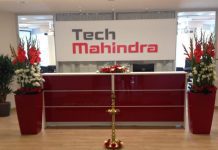Digitization has evolved as a game changer in the way we do business and it has appropriately also influenced the HR processes. While people/ human being, remains at the heart of business operations and nothing can be achieved without its well-being, digitization has brought a revolution in the way HR operates.
Industrial Relations primarily deals with Skill Development, Work Practices, Discipline, Payroll, Time office, Employee Welfare, Statutory Compliances etc. in terms of processes other than the sensitive human element – formal and informal relationships.
Enough has been written on the softer aspects of HR on Digitization, this article concentrates on how digitization has influenced the more difficult Industrial Relations popularly now also referred to as Employee Relations covering a wider range of set of employees including the white collared.
Skill Development
Programs and software tools are available to manage this in a more comprehensive way. The various skill sets, and its repository provides a good analytical input to the shop floor manager, who can populate the same individual wise, jobwise, at varying degrees of levels of skill appropriately designed and explained. The analysis provides a very good macro view on the skill sets available in the function and the manager could look at the gaps for scope requirements and achievement of targets. This also forms a very good base manpower planning which otherwise when done manually was a herculean task. A common view of the full population was hard to achieve. Online availability as a tool provides a strong coherence within the functions including the HR and Quality Management Systems. Though HR still remains the custodian of Competency and Skill mapping, digitization has helped to make the process more user friendly.
The skill gaps so populated help in focusing on training needs of the associates accordingly, not so scientific in the past.
Work Practices
Time and job study has become much easier and takes lesser time to support the industrial engineering to determine standard time required to complete a task, group of tasks to be performed and measurement of efficiency versus the standard time. This exercise has become less time consuming and team members with right skill sets are able to manage it inhouse.
HRMS systems maintain a good data base of the skill sets of the people and in the matters of absenteeism most rightful alternative can be identified to accomplish the task thus managing productivity levels always.
The concept of LEAN has gained momentum due to pressure on cost efficiencies and organizations are coming up with their adaptation of Production Management Systems after successful implementation by Toyota. Digitization has led to better analysis of existing processes which has pushed the management teams to review their processes and re-invent what works better for them.
Inputs for visual management, multi-tasking, job rotation etc. and improvement management processes are now available easily. Efficient layouts and work flows can be determined to reduce downtime between intermittent steps of manufacturing. Robotics, CNC operations, Laser, plasma, pressure technology are all now available to use on the shop floors which improve the work quality, efficiency and costs which are not manually easy to achieve. This has eased the manual labor involved for the shop floor associate and provides a more respectable workplace feel to the individual and better level of motivation. This has changed the manning levels and manufacturing workforces are reducing to a huge level in all progressive organizations in the private sector. Government and public sector is picking up cues from here and also slowly revamping.
Talent Management
Earlier a domain of white collared has now percolated to the blue collared and performance management and potential assessment is possible for this level as well. This has made it possible for the objectives to be laid out for the workmen and align the same to the organizational objectives. The levels of transparency in the system have increased and an associate on the shop floor is clearly able to view the purpose for which he is working in the organization and what his efforts are going to achieve. This is still developing and organizations with mature unions (or without any unions) have started to move in this direction.
Discipline
A bigger subject has changed the way attendance can be so correctly and accurately monitored and its live feed available to the shop floor makes the manufacturing function overly dynamic. The inputs can be interpreted in various ways through a supportive software to provide analytics in multiple ways as desired for better understanding people behavior’s. Online feed to payroll has reduced multiplicity of data processing and additional manpower required at clerical levels and has made HR function leaner.
It has also provided user, i.e. employee, a friendly tool to manage his availability (absenteeism).
Over a period of years gainful data provides a macro view of trends and its analysis is helpful to determine solutions.
Payroll
The process has become mostly online. Input feed is less cumbersome and does not involve a full team of clerks as in the past but only a few hours of a HR professional. Salary is processed, presented and transferred to employee accounts directly and pay slips are uploaded securely to individual mail accounts of the employees. Reimbursements are user friendly and flexi salary operation and taxation better managed. Employee and employer contributions to social security schemes e.g. PF, ESIC, Superannuation etc. are computed automatically and interface with finance avoids duplication of activity and provides accurate data management.
Employee benefits related to Mediclaim insurance for employee and family, Employee Compensation policy, Group Personal accident policy, Group Term life insurance, National Pension Scheme, wages for leave etc. are being managed better and smoother.
Employee Welfare
Data on finer aspects of employee uniform and shoe measurement, need not be populated fresh every time and needs an assessment for only new joiners and has reduced requirement of a dedicated resource to manage.
Data for Canteen and transport management which comes live is very handy for administration and to provide inputs to finance wherever necessary.
Health records of employees and medical checkups of employees are easily monitored on an auto mode and inputs for insurance coverages for employee and family are well available.
Various data cuts on population, eligibility for events, sports etc. is no more a cumbersome process.
Statutory Compliance
Everything is moving towards digitization even in the government labor department operations and now applications for Factory License, Shops and Establishment license, Contract labor licenses etc. can all be done online and received online.
The various periodic returns required by the government can be uploaded online and has reduced duplication of work at the government offices as well.
PF, ESIC, Gratuity, EDLIS, Superannuation, NPS etc. all social security benefits are maintained and submitted online. The Fees/challans are submitted online and so also the payments are mostly deposited on online mode. While this has improved process efficiency, levels of unethical transactions have reduced substantially.
The impact of digitization on HR team is so large that activities are outsourced to specialist agencies and the team managing Industrial Relations has reduced. The old days when there used to be a big team to manage industrial relation affairs is now running on ratio versus the population size in the organization. Thus, indirect expenses are reduced helping the bottom line of the business.
Yet everything is not achieved, and improvements are still being done at various stages based on feedback being constantly received from the users which gives a belief that nothing is too less, and maturity will not be achieved very soon in this subject. Digitization clearly delinks the human factor and human sensitivity remains impacted thereby giving a feeling to the employee of not being cared. Organizations can boast of extremely effective software’s and workflows supporting its processes but ultimately what matters is the way the people are being managed.
Author-Manish Gour has been associated with Alstom Transport India Ltd as Director, Human Resources, for Electric Locomotives Division (E-Loco), Non-Executive Director on the Alstom India Board, and Country Champion for CSR India and Ethics & Compliance ( E&C) Ambassador.









